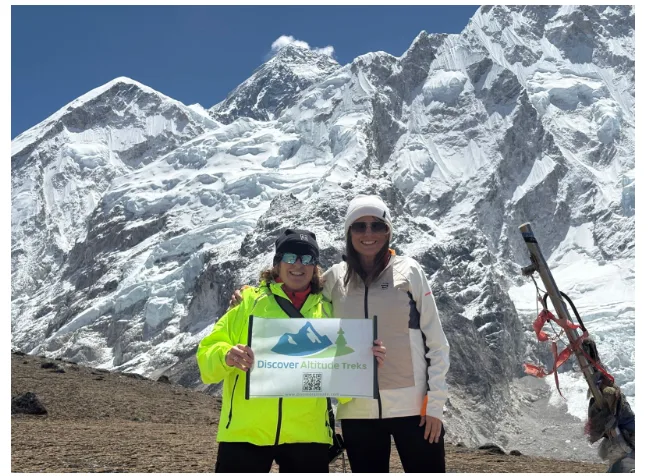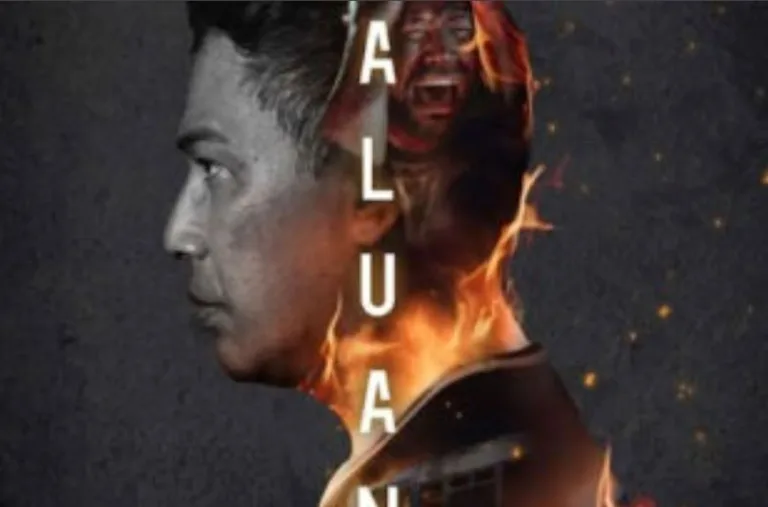Everest Base Camp Trekking: Three Unique Ways to Reach Base Camp
The Everest Base Camp Trek is more than a journey—it’s a once-in-a-lifetime experience that takes you to the foot of the world’s highest peak, Mount Everest (8,848.86 m). Every year, thousands of trekkers set their sights on this iconic Himalayan trail, but not everyone takes the same path. Whether you’re seeking a classic trekking challenge, a luxury experience, or an adventurous helicopter ride return, there’s an Everest Base Camp trek style for you.
This article explores three popular ways to experience Everest Base Camp:
- Everest Base Camp Trek (the classic route)
- Everest Base Camp Trekking with Helicopter Return
- Everest Base Camp Luxury Trek
Let’s discover what makes each of these unforgettable journeys unique.
Everest Base Camp Trek – The Classic Himalayan Journey
The classic Everest Base Camp Trek is the most authentic and immersive way to experience the majestic Khumbu region. It typically takes 12–14 days and begins with a thrilling flight from Kathmandu to Lukla (2,860 m)—a gateway to Everest.
From here, trekkers hike through a series of Sherpa villages, pine forests, and alpine valleys. The route follows the Dudh Koshi River, climbing steadily through Namche Bazaar, Tengboche, Dingboche, Lobuche, and finally to Gorak Shep and Everest Base Camp (5,364 m).
Highlights of the Classic Trek:
- Namche Bazaar (3,440 m) – The bustling Sherpa town with cafes, markets, and views of Kongde Ri.
- Tengboche Monastery – A spiritual and scenic site with views of Ama Dablam.
- Kala Patthar (5,545 m) – The best viewpoint of Everest’s summit, especially at sunrise.
- Sherpa culture – Immerse yourself in the traditions, food, and hospitality of the Sherpa people.
- Everest Base Camp – Stand at the base of the tallest mountain on Earth, where climbers prepare for summit attempts.
Difficulty and Altitude:
The trek requires good physical fitness. Trekkers typically walk 5–7 hours per day, gaining altitude steadily. Proper acclimatization is vital to prevent altitude sickness.
Accommodation:
Accommodations range from basic teahouses to more comfortable lodges with hot showers and Wi-Fi (at extra cost). Meals typically include dal bhat (Nepali lentils and rice), noodles, soups, and pancakes.
Everest Base Camp Trekking with Helicopter Return – Adventure and Comfort Combined
For those who want the thrill of the Everest Base Camp journey but prefer to save time or skip the downhill return trek, the Everest Base Camp Trek with Helicopter Return is a perfect choice.
This option combines the full trekking experience to Base Camp, but instead of walking back to Lukla, you enjoy a scenic helicopter ride over the Himalayas.
Key Benefits:
- Time-saving – Ideal for trekkers on a tighter schedule. The total trip takes 9–10 days.
- Less physical stress – Reduces the wear and tear on knees and legs by avoiding the downhill trek.
- Panoramic views – The helicopter ride offers jaw-dropping aerial views of Everest, Lhotse, Nuptse, Pumori, and the Khumbu Glacier.
- Emergency backup – Helicopters can also be used in emergencies, making this option safer in some cases.
What to Expect:
After reaching Gorak Shep and visiting Everest Base Camp, trekkers typically hike up Kala Patthar the next morning. The helicopter picks you up from Gorak Shep and returns you directly to Lukla or even Kathmandu.
Ideal For:
- Travelers with limited time
- Older adventurers or those who want to reduce physical exertion
- Couples or families seeking a premium adventure
Everest Base Camp Luxury Trek – Trek in Style and Comfort
Want the thrill of trekking in the Himalayas without giving up your creature comforts? The Everest Base Camp Luxury Trek blends the rugged beauty of the mountains with the elegance of high-end lodges, gourmet meals, and professional services.
You follow the same route as the classic trek but stay in luxury accommodations like Yeti Mountain Home or Everest Summit Lodge, which offer heated rooms, ensuite bathrooms, cozy lounges, and excellent service.
What Makes It Luxury?
- Superior Accommodation – Premium lodges with high-end amenities, clean beds, hot showers, and fireplaces.
- Gourmet Dining – Enjoy fresh meals, including organic ingredients, desserts, and sometimes even wine.
- Guided Support – Highly experienced guides, private porters, and sometimes even medical support are included.
- Better Acclimatization – Slower itineraries with rest days in luxury settings help you adjust better to the altitude.
Itinerary Highlights:
- Fly to Lukla, trek through Phakding and stay at luxurious lodges in Namche Bazaar, Deboche, Pangboche, and Dingboche.
- Enjoy spa treatments and comfortable rest before continuing toward Lobuche and Everest Base Camp.
- Some luxury treks offer helicopter returns to minimize exertion and maximize enjoyment.
Ideal For:
- Older trekkers or families
- Honeymooners or special occasion travelers
- Those who value comfort, privacy, and personalized service
Comparing the Three Options
| Feature | Classic Trek | Trek + Helicopter Return | Luxury Trek |
| Duration | 12–14 days | 9–10 days | 12–14 days |
| Physical Difficulty | Moderate–Challenging | Moderate | Moderate |
| Comfort | Basic to Mid-range | Mid-range | High-end |
| Best For | Adventure lovers | Time-constrained trekkers | Luxury seekers |
| Cost Range (approx.) | $1450 to 1750$ | $2550 to $3500 | $4250 to 9500$ |
Best Time to Trek to Everest Base Camp
The best seasons to trek in the Everest region are:
1. Spring (March to May)
- Clear skies and blooming rhododendrons
- Warmer temperatures
- Peak climbing season for Everest
2. Autumn (September to November)
- Post-monsoon clarity and cooler temperatures
- Less rain, excellent visibility
- Bustling trekking atmosphere
Avoid monsoon season (June to August) due to slippery trails and winter (December to February) if you’re not prepared for extreme cold and snow.
Preparing for the Trek
Regardless of the style of Everest Base Camp trek you choose, preparation is key.
Physical Preparation:
- Train at least 2–3 months in advance with cardiovascular workouts, strength training, and endurance hikes.
- Practice with a loaded backpack and try hiking at higher elevations if possible.
Packing Essentials:
- Warm layers, a down jacket, thermal wear
- Sturdy hiking boots, trekking poles
- Sleeping bag (for classic trek), personal toiletries
- Sun protection: sunglasses, sunscreen, lip balm
- Water bottles and purification tablets
Permits Needed:
- Sagarmatha National Park Entry Permit
- Khumbu Pasang Lhamu Rural Municipality Permit
- TIMS Card (for some agencies)
Cultural Immersion on the Trek
One of the most enriching aspects of the Everest trek is the cultural experience. You’ll walk through traditional Sherpa villages, visit monasteries, spin prayer wheels, and listen to the hum of Buddhist chants.
The Sherpa people, renowned for their mountaineering prowess, are warm, humble, and deeply spiritual. Visiting places like Tengboche Monastery offers a unique glimpse into their religious traditions.
Environmental Responsibility
As the popularity of the Everest Base Camp region grows, so does the responsibility to trek sustainably.
- Carry reusable water bottles to reduce plastic use
- Respect local customs and wildlife
- Choose tour operators who follow ethical trekking practices
- Avoid littering and take all non-biodegradable waste back
Conclusion: Which Everest Base Camp Trekking Option Is Right for You?
The journey to Everest Base Camp is truly transformative, and now more than ever, travelers have multiple ways to experience it:
- Go classic if you want a raw, rewarding Himalayan trek and aren’t afraid of a challenge.
- Choose the helicopter return if you’re short on time or want to end the trek in style.
- Opt for the luxury trek if you wish to balance adventure with premium comfort.
Each of these options offers breathtaking mountain scenery, cultural richness, and a deep sense of personal accomplishment.
No matter how you choose to go, one thing remains certain: standing beneath Mount Everest will change the way you see the world—and yourself.
Related Recommended Experience: Manaslu Circuit Trek – For trekkers looking to explore a quieter, equally stunning trail with raw natural beauty and Tibetan culture, this remote trek offers a remarkable alternative or follow-up adventure.
Contact Discover Altitude Treks to book your exclusive luxury trek to Everest Base Camp




